A Powerful Combination: Physical Education and Chess for Holistic Student Development
In today’s fast-paced educational environment, schools are increasingly recognizing the importance of fostering well-rounded students. Integrating physical education and chess into the curriculum provides a unique approach to achieving holistic development. While physical education promotes fitness and teamwork, chess enhances critical thinking and problem-solving abilities. Together, they create a balanced environment that nurtures both physical and mental growth, equipping students with the tools they need to excel both inside and outside the classroom.
Chess for holistic student development goes beyond improving academic performance—it strengthens cognitive abilities, teaches patience, and builds resilience. When combined with the physical benefits of regular exercise, the synergy between these two activities supports the development of a student’s mind and body. This innovative approach ensures that students not only excel academically but also develop essential life skills that contribute to their overall well-being and success.
- How does combining physical education and chess benefit students?Combining physical education and chess helps students develop both physical and cognitive skills. Physical education promotes fitness, teamwork, and discipline, while chess enhances problem-solving, memory, and strategic thinking. Together, these activities create a balanced approach to holistic student development.
- Can chess improve students' academic performance?Yes, chess is known to improve academic performance by enhancing critical thinking, focus, and memory. It teaches students to anticipate consequences and solve complex problems, skills that can be applied to subjects like mathematics, science, and reading comprehension.
- Is chess suitable for all age groups in schools?Yes, chess can be adapted for all age groups, from elementary to high school. Younger students benefit from learning the basic rules and strategies, while older students can engage in more complex games that further enhance critical thinking and cognitive skills.
- How can schools implement physical education and chess together?Schools can introduce a combination of physical education and chess by incorporating chess into PE classes, organizing after-school chess and sports clubs, or hosting chess tournaments alongside athletic events. These initiatives help promote a balance between physical fitness and mental agility.
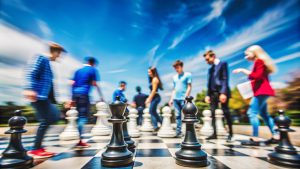
The Need for Holistic Student Development
Holistic education places emphasis on the development of the whole person: mind, body, and spirit. The approach nurtures emotional and social growth and physical growth together with intellectual capabilities. Conventionally, schools have separated physical education from intellectual development, but the latest research seems to favor integrating different learning modes to produce all-round, adaptable learners.
Physical Health and Mental Agility
Such a combination of physical activities and intellectually challenging games, such as chess, may provide a much more holistic and efficient learning environment. Physical activities have been proven to enhance brain activity by facilitating blood circulation within the head, helping to develop new neurons, and reducing levels of stress. On the other hand, chess enhances problem-solving capabilities, memory, and strategic reasoning. Merging both, students benefit in terms of improved physical fitness and enhanced cognitive abilities.
Benefits of Physical Education
Physical Education plays an important role in the development process for a student to develop physically, create teamwork, and discipline. Benefits of PE extend well beyond fitness:
- Improved Physical Health: Regular physical activity helps maintain a healthy weight, builds muscle, and strengthens the cardiovascular system.
- Mental Well-being: Physical activity triggers the release of endorphins, the body’s natural mood elevators. This can reduce stress, anxiety, and depression, providing a mental health boost.
- Social Skills: PE often involves team-based sports and activities, helping students develop social skills, teamwork, and leadership abilities.
- Discipline and Focus: Learning the rules of different sports and engaging in regular physical activity can also foster self-discipline, patience, and focus.
However, physical education alone does not provide the mental challenge that is crucial for developing critical thinking and problem-solving skills.
To learn information about the benefits of chess, read this article: 15 Surprising Benefits of Playing Chess You Need to Know
The Cognitive Power of Chess
The game of chess has, for centuries, been credited with building one’s intellect. Chess excites the brain in ways other forms of learning can’t. Some cognitive benefits related to chess include:
- Problem-Solving Skills: Chess players are constantly analyzing situations and predicting their opponent’s next move, which helps improve logical thinking.
- Memory Enhancement: Remembering previous games, strategies, and moves sharpens both short-term and long-term memory.
- Strategic Thinking: Chess teaches students to think several steps ahead and anticipate consequences, promoting long-term planning and foresight.
- Patience and Resilience: The game teaches patience and the ability to recover from setbacks, which are crucial life skills.
- Concentration: Chess requires intense focus, and over time, players develop the ability to maintain concentration for longer periods.
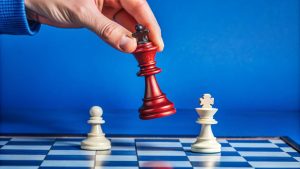
Why Combine Physical Education and Chess?
In integrating physical education with chess, multidimensional student development can be achieved. Here is how integration of the two subjects can bring about all-round individuals:
-
Balance of Body and Mind
Whereas physical education builds up the body, chess sharpens the mind. Both just perfectly complement the development of both body and mind, thereby making an interaction that produces results in greater performance in academics, athletics, and even daily life.
For example, students can change from the physically exhausting session of PE to the mental challenges of chess. This would further help a student in gaining endurance by learning how to toggle between physical and mental challenges and keeping his body and brain in perfect states.
-
Enhanced Focus and Concentration
Both physical education and chess demand high levels of concentration; however, it is of a different nature altogether. In the case of physical activities, especially sports, it is required to focus on immediate quick-paced movements, whereas in the case of playing chess, deep and strategic thinking over a long period is required. Training students in both helps broaden their spectrum of concentration across different domains.
The students who participate regularly in chess and physical activities are bound to have better concentration even in their other academic subjects. Physical activity will provoke the brain into better problem-solving and critical-thinking capabilities.
-
Stress Relief and Mental Clarity
Exercise is also well documented for relieving stress and increasing mental clarity. Add this to a game like chess, which hones the mind and improves cognitive functions, and you get a formidable method of stress release. The physical activity serves to channel excess energy and stress, while chess fine-tunes clear thinking under pressure.
-
Development of Social Skills
Exercise is also well documented for relieving stress and increasing mental clarity. Add this to a game like chess, which hones the mind and improves cognitive functions, and you get a formidable method of stress release. The physical activity serves to channel excess energy and stress, while chess fine-tunes clear thinking under pressure. Similarly, exercise is also documented to relieve stress and improve one’s mental clarity. Combine this with the game of chess, which fine-tunes the mind and enhances all cognitive functions, and you have a great way to release stress. While the physical activity serves to channel excess energy and stress, chess fine-tunes clear thinking under pressure.
Implementing Chess and Physical Education Programs in Schools
Schools are only now beginning to realize such programs’ potential that truly integrate mental and physical education. The following is a pragmatic way to incorporate chess and physical education into the curriculum:
-
Chess in the PE Curriculum
Chess helps them to slowly come out of that physical challenge to an intellectual challenge as a cool-down or as a mental exercise at the end of the PE session. The school can allocate a certain percentage of PE classes for chess, or it can carry out chess extracurricular activities along with sports extracurricular activities.
-
Cross-disciplinary Learning
Schools will be able to introduce cross-disciplinary learning in students by facilitating sessions encompassing physical activity combined with chess-based learning. Relay races or obstacle courses followed by a chess match will help in training the body and mind together.
-
Specialized Classes and Clubs
Some schools implement a combination of physical and mental training into special lessons or after-school clubs that involve students in both sporting activities and chess games. This approach builds a symbiotic and well-rounded relationship among the school’s student population.
-
Competitions and Tournaments
Apart from the sportive events within the school, there may be chess tournaments to enable students to develop their physical and mental capabilities. This is inclusive, and students can also learn about the value of both athletic and intellectual competition.
Success Stories: Schools That Combine Chess and Physical Education
A number of schools worldwide have already started realizing how effective it can be to combine phys ed with chess. There are programs in New York City among others, like “Chess in the Schools,” which are part of curricula that work together with chess as part of an overall educational plan while incorporating physical fitness for the children.
Indeed, evidence in countries such as Armenia, which incorporated chess as a part of the academic curriculum, is not rare to find students who, along with regular physical education, perform well academically and also develop strong social skills. This is proving to be a winning strategy in its holistic integration for the students.
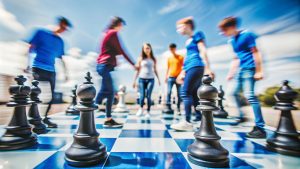
Conclusion
Integrating physical education and chess offers a powerful approach to shaping well-rounded students who excel in both physical and mental arenas. By combining the physical benefits of exercise with the cognitive stimulation of chess, students develop not only stronger bodies but also sharper minds. This dynamic pairing fosters critical skills like problem-solving, concentration, and teamwork while promoting fitness and emotional well-being. Schools that embrace this strategy can cultivate a generation of students who are equipped to handle academic, athletic, and real-world challenges with confidence and resilience.
The synergy between chess for holistic student development and physical education creates a learning environment where both body and mind thrive. It’s not just about enhancing academic performance—students also build essential life skills like patience, strategic thinking, and perseverance. As schools adopt this innovative approach, they will help nurture well-balanced individuals who are prepared to succeed in all aspects of life, both now and in the future. This combination is the key to unlocking a student’s full potential.
We’ve prepared a podcast to accompany this article, offering the same insights in an audio format. If you enjoy listening, give it a play!
References:
- De Bruin, A. B. H., et al. (2006). “The relation between cognitive and physical exercise.” Educational Psychology Review, 18(1), 35-51.
- This study discusses how cognitive and physical exercises can enhance each other, providing a theoretical framework for the integration of physical education and cognitive games like chess.
- Barros, R. M., & Ferreira, J. F. (2016). “Chess and Physical Education: A Study on the Influence of Chess on Academic Performance.” International Journal of Physical Education, Fitness and Sports, 5(1), 5-15.
- This article examines the positive effects of chess on academic performance, highlighting how combining chess with physical education can create a more holistic educational experience.
- Singh, A., & Shukla, V. (2020). “Benefits of Physical Education in Schools.” Journal of Health and Physical Education, 9(2), 89-95.
- This research outlines the various benefits of physical education, including its impact on mental health and social skills, supporting the argument for its integration with cognitive activities.
- Campitelli, G., & Gobet, F. (2004). “The relation between chess skill and cognitive abilities: A meta-analysis.” Intelligence, 32(3), 333-350.
- This meta-analysis reviews the connection between chess skill and cognitive abilities, emphasizing how chess can improve critical thinking and problem-solving skills.
Example Citations:
- “Research shows that engaging in both cognitive and physical exercises leads to improved brain function and academic performance (De Bruin et al., 2006).”
- “Barros and Ferreira (2016) found a significant correlation between chess practice and enhanced academic success among students, indicating the potential benefits of integrating chess into physical education.”
- “According to Singh and Shukla (2020), physical education contributes to better mental health and social skills, reinforcing the importance of a balanced educational approach.”
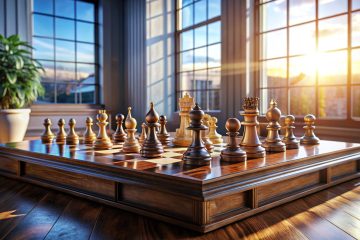
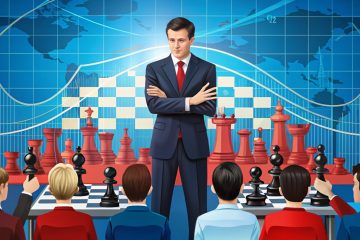
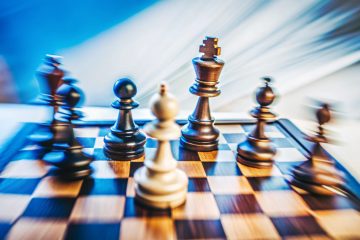
0 Comments